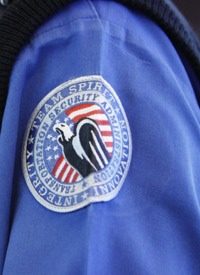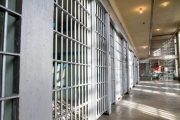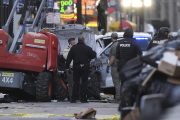
To the chagrin of freedom lovers nationwide, the Transportation Security Administration is not only increasing its militant efforts at the airport, but doing so in a disturbingly intrusive way. According to a law enforcement official at the TSA, security officials will be changing their traditional hand pat-down at the airport to a “hand-sliding motion.”
CBS News explains, “Pat-downs are used when something on the passenger sets off the metal detector, when the imaging technology detects something suspicious on the passenger and when the passenger opts out of the electronic screening methods.”
TSA spokeswoman Kristin Lee claims that the administration conducts regular reviews and updates on screening procedures, and asserts that screeners will use both methods of pat-downs to help detect hidden weapons or explosives.
She also indicates that the pat-down will continue to be performed by screeners who are of the same gender as the passenger, and would not go into further detail on the differences between the pat-down procedures.
“Passengers should continue to expect an unpredictable mix of security layers that include [sic] explosives trace detection, advanced imaging technology, canine teams, among others.”
One anonymous law enforcement official, however, admitted that the new hand-sliding technique is already in use at some airports.
CBS News reports, “Counterterrorism officials say commercial aviation continues to be an attractive target for terrorists and terror operatives are constantly trying to find ways to evade security.”
The TSA has faced harsh criticism from a variety of groups opposed to the measures it has taken under the guise of security.
Even European officials joined the fight against the TSA. British Airways Chairman Martin Broughton accused the United States of making inane demands on airport passengers, such as the removing of shoes and separate examinations of laptop computers.
He declared, “Europe should not have to kowtow to the Americans every time they want something done to beef up security on U.S.-bound flights.”
The owner of Heathrow Airport in England agreed with Broughton’s assertions. Likewise, the European Union has challenged the American requirement for European passengers to have online checks before boarding U.S.-bound flights, calling it a burdensome measure.
The TSA has defended itself, asserting: “The U.S. works closely with our international partners to ensure the best possible security. We constantly review and evoke our security measures based on the latest intelligence.”
One of the security measures that should be reviewed and revoked is the body scanner recently introduced into American airports nationwide. This device is an X-ray machine which penetrates clothing, making passengers appear naked on the monitor. The pictures are so clear and vivid that British airports have refused to use the scanners on children.
The TSA has attempted to defend the use of these machines, claiming that passengers are given a choice to avoid the devices by allowing a full-body search instead. But despite the public outcry against the body scanners, they continue to be added to American airports.
On Wednesday, Becky Akers of The New American reported, “In its zeal to peel every last shred of dignity from passengers, the Transportation Security Administration foisted its strip-search scanners on New York City’s John F. Kennedy International Airport this weekend. They will soon infest LaGuardia and Newark’s Liberty … International, too, as they have airports nationwide.”
Akers writes that 300 body scanners can be found at 61 airports across the U.S., and they are continuing to make their way around the country.
The machines have revealed the more perverted side of airport workers, as several security officials have been caught misusing body-scan images. For example, a 25-year-old security worker at London’s Heathrow Airport reportedly ogled a female colleague as she appeared on the full-body scanner, later making lewd comments to her.
Likewise, according to CNET News, the U.S. Marshals Service has admitted that it has saved thousands of images that were recorded from airport security checkpoints. Marc Rotenberg of the Electronic Privacy Information Center explained that the devices were in fact “designed and deployed in a way that allows the images to be routinely stored and recorded.”
It is clear that the addition of the revised pat-down is just one of many examples of airport security measures run amok.
Photo: AP Images




